HD video with DSLRs – The good, the bad and the ugly.Part 1: the bad & the ugly
We all have come to love the video image delivered by our DSLRs. The shallow depth of field is something that was only attainable with so much effort up until only a couple of years ago.
The image is in fact so strikingly similar to 35mm film for exactly that shallow depth of field that ‘the big guys’ from Hollywood are taking notice and using them for an ever-increasing number of productions. DP Rodney Charters shot background footage for the non-discontinued hit show “24” on Canon 5Dmk2’s, Robert Rodriguez was spotted shooting a music video on 7D’s, and now even the final episode of this season of “House” was shot on the 5Dmk2, as confirmed by the director Greg Yaitanes (who, by the way, is answering questions about that on Twitter and did an extensive one-hour audio interview about this episode with Philip Bloom).
So ok, these cameras have been picked up by the big guys. Despite this we all know that they are far from perfect. To be perfectly honest, their size, the removable lenses and especially the size of their chips is the only thing really good about them. This leaves us with VERY imperfect video camcorders. They are missing everything we have come to expect from “real” camcorders and a whole industry has evolved around these imperfections, selling people everything from a basic shoulder rig to variable ND filters and devices for professional audio recording. It is cumbersome.
One thing that I find particularly tiresome is the fact that these things are still image cameras that “happen to” shoot jaw-dropping video. Canon didn’t intend to tackle the filmmaker market at all. They wanted to give news reporters the chance to capture some clips of what they are photographing, in order to allow their news agency to probably put them up their website in addition to the still images in an editorial piece.
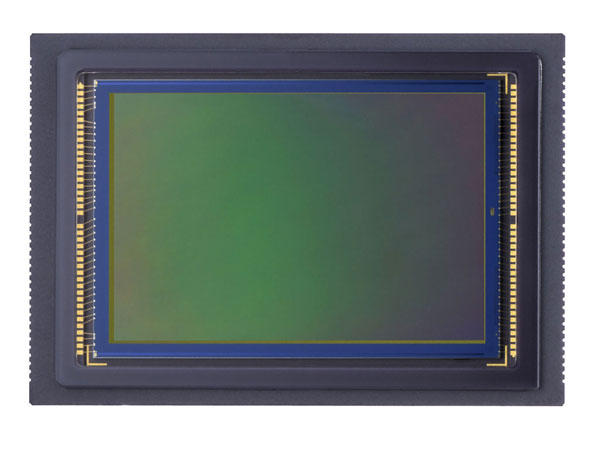
CMOS sensor inside a modern DSLR camera
For that very reasons we get other drawbacks with these cameras apart from the whole design and handling factor. The chips inside these DSLRs have a way too high resolution for HD video. They are still imagers. So you might think, “what’s the problem with too much resolution, just down-convert it?” Well, it’s not that easy.
Today, I will focus on the weaknesses of DSLRs that derive from the fact that they are mainly still image cameras. I will focus on these weaknesses because they can’t be overcome so easily as long as these things shoot high-resolution still images at the same time. (Other weaknesses are due to hardware or software design that can much easier be enhanced.)
1. Line-skipping
So back to the question: Why not down-convert the footage if the resolution of the sensor is too high for HD?
That’s not how this works. The cameras and their processors are way too slow to do that. Heck, we can be happy they do up to 30 frames per second in 1080p, because THEY ARE JUST STILL IMAGERS!
So how did they solve this problem? That’s were the often-hated “line-skipping” comes in. When shooting video, the CMOS imagers of these DSLRs aren’t read out in their entirety, only a certain number of lines is read out and then converted into 1080p or 720p. As Stu Maschwitz pointed out on his blog, this results in amazingly low effective resolution if you look at the 1080p video coming out of the 7D (or 550D, which uses a same-sized CMOS sensor). (But it doesn’t matter that much to most people because the 35mm film image we’re used to from the theaters isn’t so very clear either, due to all the processing and analog copying of the film stock that was going on before it hits the big screen.)
Without going into too much detail, that’s what you need to know:
It’s not perfect 1080p footage because it just doesn’t always work out perfectly mathematically when skipping those unnecessary lines. 720p is often worse than the 1080p mode, but only 720p gives you the chance to create slow-motion footage due to the higher frame rates.
All this line skipping and twisting of the footage has some major drawbacks:
First of all, practically all of us DSLR users have come across the problem of aliasing. This is a direct consequence of line skipping and the conversion of the footage in the process within the camera. There are certain things that are VERY hard to shoot with DSLRs. Try fine structures of any kind for a start. Good luck with that! Especially when using 720p these problems are VERY common. Check out this very “normal” shot from my short FEBRUARY, enlarged:
2. Rolling shutter
Another thing is the oh-so-hated “skew”, aka “rolling shutter”. Look at this (admittedly extreme) demonstration I shot with a 550D at 320mm.
Now rolling shutter is a problem that all CMOS-based cameras (and these are, in fact, almost all new camcorders out there today) face in a more or less bad way. Instead of reading out the sensor at once (how it used to be with CCD cameras), CMOS sensors are read out sequentially, one line after another. That means that the bottom of every single still frame isn’t recorded in the exact same moment as the first lines. This isn’t much of a problem in most shooting situations, but everything that’s moving to fast will look skewed – be it the camera itself (quick pans) or a fast object (try a tramway or a truck on the highway shot from the side).
So yes, all CMOS-based cameras have this problem, but it is MUCH worse with DSLRs because of the line skipping: As I said, their resolution is much higher because of the still image function of these cameras. Therefore, there are simply more lines to be read out. Most of the lines are skipped when recording video, but that doesn’t mean that the remaining lines can be read out any faster than before. This results in even worse skew than with most other cameras.
3. Light sensitivity – great, but room for improvement?
The third thing that comes to my mind is light sensitivity. We have all been spoilt with the unbelievable low-light sensitivity of these new DSLRs due to their enormous chip sizes (again, when compared to ‘normal’ camcorders), so most people haven’t thought about that too much, but please do:
What if we had a CMOS chip of the same size as in current DSLRs (that is, 35mm still equivalent like in the 5Dmk2 or APS-C-sized like in the 7D / 550D), but with a MUCH lower resolution, “only” 1080p? These would “only” be video camcorders (yes, most of us want that) and they would get rid of most of the problems I just mentioned. Also, they would of course be even more light sensitive in video mode as current cameras, because these fewer lines would mean the individual pixels could be much bigger and therefore absorb even more light!
I have always loved Panasonic for having an ear for the real desires of filmmakers. My first “proper” video camera was the AG-DVX100A, a professional Mini-DV camcorder that I still love and still sometimes use for conference recordings and similar stuff. Back then, it was the first camera to shoot progressive frames, and this was as big a deal for us indie filmmakers as the shallow depth of field is nowadays. Anyway, Panasonic listened to the wishes and complaints of customers from everywhere on forums like dvxuser.com and put out revision after revision of this camcorder. Going through the improvements of every new model felt almost like going through the list of all the (realistic) wishes of filmmakers. It was unbelievable and many of us wish Canon or Sony would listen in the same way sometimes.
So it seems Panasonic is doing it again and is releasing the first “real” camcorder with a 4/3 inch chip, that does ‘only’ 1080p and other HD variants, the AG-AF100. Panasonic’s 4/3 standard is only marginally smaller than an APS-C sized sensor, check out this sensor size comparison image that I stole from Philip Bloom’s blog post on the AF100 🙂
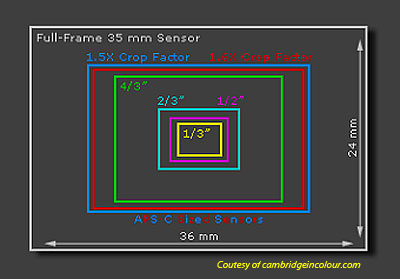
That means that this camcorder most likely won’t suffer from all of the above – aliasing or extreme rolling shutter. And maybe it will be even more light sensitive compared to other 4/3 cameras like their Lumix GH1 (which is also mainly a still imager). Maybe my hopes are too high, and they might not get everything right in the first 4/3-camcorder like this, but we shall see!
EDIT: Some new info on the AF-100 popped up over at EOSHD.com – check it out, it includes some quotes from the product manager with some new and insightful info about this camera.
So where does that leave us with our DSLRs? Is there a way to turn their weaknesses into strengths?
I focus on one of these DSLR peculiarities and ways to possibly exploit it in the 2nd part of this series:
Full HD ‘digital zoom’ using crop – a viable option?
-
Hey, noticed a small typo – should be ‘Robert Rodriguez’.
Anyway, great article! I’ve been thinking of investing in an HD DSLR to shoot video with, and the points made here really articulate all those caveats I’ve been reading about in the time I’ve been researching them. All in all, the aliasing and rolling shutter in particular are in fact annoying and are things I hope get fixed in the future, but for the price point that a lot of these cameras are being sold at (especially the T2i), I think a lot of the pros outweigh the few cons, at least for what your money’s worth.
Then again, this is all pure speculation since I’ve never actually worked with any of these cameras personally, so perhaps after some hands-on experimentation I might change my mind. We’ll see! Haha.
-
You trying to be funny?
-
-
Great article. I love how you explain how everything works.
I look forward to the other parts.
-
Well written article by someone who knows the subject extremely well. I do have one point that wasn’t really addressed. Cost vs. Benefit ratio. I am an audio engineer. I currently have the ability to capture audio at digital sample rates 3 times higher than CD resolution. The quality of this captured audio compares with analog 2″ tape. the thing is I can only hear this difference if my speakers can reveal that much detail. Further, my audio converters needs to be capable of decoding and revealing this extra detail, as do my cables, and even my power supplies. I love high fidelity, but I am in the minority. Most people have their treble and bass knobs turned all the way up will listening to at best, 256kbps aac audio. That is so far from the 192K (192 thousand samples a second) audio that is possible.
This panasonic camera cost an estimated 6 grand from my quick google search. I could get a T21, a couple great lenses, an 27″ i7 iMac, and Final cut express for that 6 grand. I would be making very high quality films while the purchaser of the panasonic will only have a camera body. Do the gains in quality outweigh the practical benefit? If money was no object we would all have RED cameras, SAN editing bays, and work with unlimited storage.
What I have come to appreciate is that access to create content and creative expression is key. No more gate keepers, i.e. distribution, proprietary technical knowledge, or expensive hardware.
With a dedicated approach to understanding the ins and outs of image capturing, one can with a very small budget, produce content at a quality simply impossible before these wonderful DSLRs. The tutorials on flattening to maximize dynamic range have been enlightening if you’ll pardon the pun.
-
Good read here. I personally love shooting with the Panasonic AG-DVX100A. 🙂
-
Nice Article indeed.
I think it’s funny that everything of this was a clear thing when we bought the cameras (at least I did know all of this), but still we love the look and feel of it.
It’s not simply DoF, it’s the whole look. It’s simply different, kinda silky. Great.But I don’t like the new Panasonic (I have to admit, I can’t stand the HVX200 either); the Crop is high (like 2), and it’s typically expensive (at least for me, beeing a student). But most of all it’s 24mbits recording – I hoped it would get better after 25mbit DV, but it doesn’t. 35mbit from a EX3 is nice, but also not very great – but 44mbit from my DSLR is kinda nice, I think.
At last: it’s very affordable. For me, at least 😀Regards,
Lucas -
A useful tip
-
Awesome article! Thanks again
-
Interesting blog. I was lucky enough to have a close look at the AF100 at IBC last week, and I have to say I was very impressed. It can be compared to a DSLR only in the lenses that it uses,otherwise they are very different. It has many things that a video camera has to have, a useable viewfinder, time code, proper sound inputs, and many user selectable functions. There is no point in criticising it because of it’s cost, they are entirely different animals. If cost is a problem, then stay with a DSLR, but for far more usability and less hassle, the AF100 will be a great tool.
-
550D resolution: 5184 x 3456 = 19.715.904 pix
HD resolution: 1920 x 1080 = 2.073.600 pixRatio is 8.64.
550D sensor size (photo) = 22.3 x 14.9 mm
550D sensor area (photo) = 332.27 mm²550D effective sensor area (video) = 332.27/8.64 = 38.46 mm²
550D effective sensor size (video) ~ 5 x 7.5 mmWhich is less than cheap 1/2.3″ PowerShot sensor.
-
p.s. It’s 17,915, 904 in the first line.
-

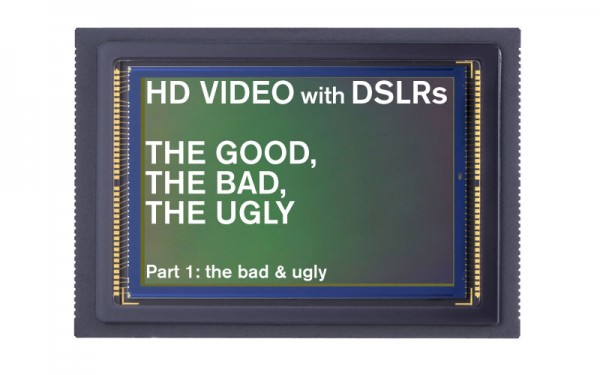
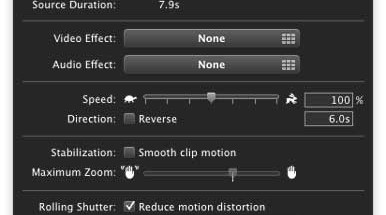

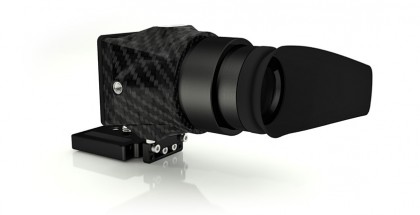
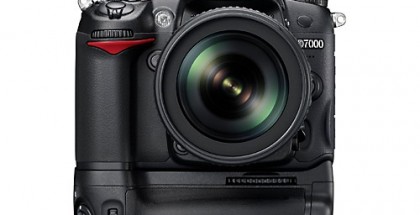
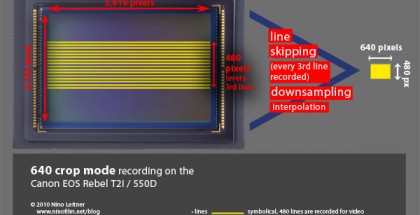
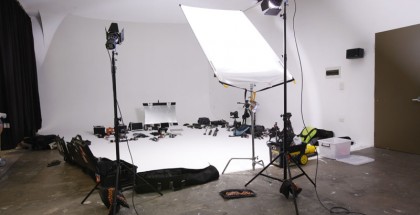
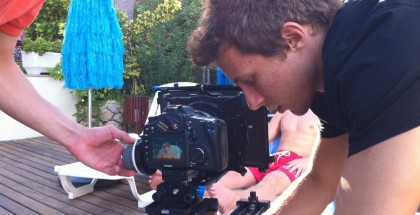
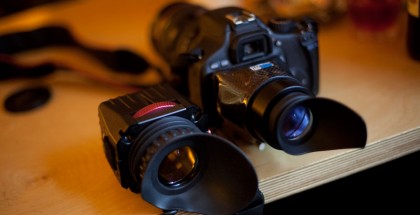












Comments